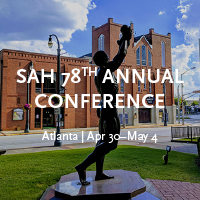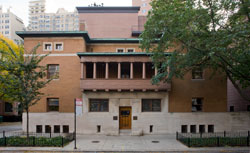-
Membership
Membership
Anyone with an interest in the history of the built environment is welcome to join the Society of Architectural Historians -
Conferences
Conferences
SAH Annual International Conferences bring members together for scholarly exchange and networking -
Publications
Publications
Through print and digital publications, SAH documents the history of the built environment and disseminates scholarshipLatest Issue:
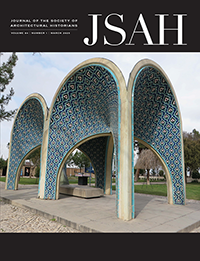
-
Programs
Programs
SAH promotes meaningful engagement with the history of the built environment through its programsMember Programs
-
Jobs & Opportunities
Jobs & Opportunities
SAH provides resources, fellowships, and grants to help further your career and professional life -
Support
Support
We invite you to support the educational mission of SAH by making a gift, becoming a member, or volunteering -
About
About
SAH promotes the study, interpretation, and conservation of the built environment worldwide for the benefit of all
Membership grants you access to exclusive resources and programs and provides support for new research and programs. Compare benefits across all our membership levels and choose the membership level that works for you.
Every Member Receives
- A yearlong subscription to the Journal of the Society of Architectural Historians (JSAH). Choose from digital access only or a combined print and digital subscription.
- On-demand access to the complete JSAH Archive (1941–present)
- Member rates for registration to SAH’s Annual International Conference
- AIA CES credits earned through conferences and study tours
- Eligibility to apply for SAH grants and fellowships
- Access to members-only lectures, virtual meetups, and more
- Connection to peers through 12 topic-focused SAH Affiliate Groups
- Access to more than 200,000 images of the built environment through the SAHARA database
- Access to SAH Commons online scholarly network
- Discount of 50% on JSTOR access with JPASS
- Eligibility to serve on the SAH Board or committees
- Subscription to the SAH Newsletter and Opportunities Weekly Roundup
Membership Levels
SAH Member
Our most popular membership tier offers optimized pricing to help everyone participate affordably in our community. Emerging scholars can apply for a one-year membership grant that helps bridge the gap between the Society's subsidized student memberships and full-cost SAH memberships.
| Rate | Description | Price: Digital | Price: Digital + Print |
| Individual | 12-month benefits for one person | $163 | $173 |
| Joint | 12-month benefits for two people (domestic partners). Each person receives a unique member ID and their own login to the member portal. | $233 | $243 |
| Retired/Emeritus | Discounted individual membership for former professionals on a fixed income | $98 | $108 |
| Reduced | Discounted individual membership for people working independently or at an institution without full-time employment. This includes adjunct and contingent faculty unemployed workers. | $98 | $108 |
| Student | Discounted individual membership for students currently enrolled in an undergraduate or graduate program in architectural history or related disciplines. | $60 | $70 |
| Professional Associate | Discounted individual memberships for groups of professionals working in the same museum, office, or firm. Ideal for architects, research or preservation groups, museum staff, and public design education. | $179 for first member + $103 for each additional member at the same institution | |
Upper-Level Member
Show your support for SAH’s mission by including a tax-deductible donation along with your Individual or Joint print + digital membership. Upper-level members receive all the benefits of a regular membership plus:
- Discount on registration for SAH Annual Conference, rates given below.
- Acknowledgement in four quarterly issues of JSAH, the annual report, and quarterly donor reports
- Membership to Frank Lloyd Wright National Reciprocal Sites Program, with which our headquarters, the Charnley-Persky House is affiliated.
- Early registration access for SAH Study and Excursion tours
| Tier | Donation | Price with Individual Membership | Price with Joint Membership | Discount on Annual Conference Registration |
| Cornerstone | $150 | $323 | $393 | 5% |
| Pillar | $350 | $523 | $593 | 7% |
| Keystone | $500 | $673 | $743 | 8% |
Life and Benefactor Member
Show your long-term commitment to SAH by becoming a Life member. Life members’ dues provide unrestricted funds to support the Society’s mission and continued opportunities for all members. Lock in your price and enjoy the most comprehensive suite of member benefits without the need to renew each year.
Life members receive these additional benefits:
- Acknowledgement in JSAH, annual report, and quarterly donor reports
- Membership to Frank Lloyd Wright National Reciprocal Sites Program, with which our headquarters, the Charnley-Persky House is affiliated.
- Early registration access for SAH Study and Excursion tours
- Specialty membership card
- Free tour of SAH's historic headquarters at the Charnley-Persky House in Chicago, IL
- One complimentary walking tour during SAH Annual Conference, reserved in advance, on a space-available basis.
- Free copy of an SAH Buildings of the United States book of your choice
Current Life Members can enhance their commitment to SAH by becoming a Benefactor through a $5,000 tax-deductible donation.
| Tier | Price | Donation Total |
| Life | $5,000 (one payment or four annual payments of $1,250) | None * |
| Benefactor | $10,000 | $5,000 |
* Life memberships are amortized over a period of 20 years and pay for annual benefits. There is no tax-deductible portion associated with Life membership.
President's Circle
SAH is immensely grateful to the many Life and Benefactor Members who continue to support the Society financially year after year. President’s Circle status recognizes the ongoing commitment these members show.
President’s Circle status is an annual distinction given to all Life and Benefactor members who make gifts to the Society of Architectural Historians totaling $1,000 or more during a given 12-month period. The status is applied to a donor as soon as they have achieved $1,000 in gifts within a single calendar year. The status is valid for 12 months from that date, and the date shall serve as an anniversary by which to renew their President's Circle status with one or more gifts totaling $1,000.
President's Circle members receive special benefits as thanks for their support:
- 10% discount on member-rate conference registration
- Recognition from the podium at SAH Celebrates annual gala
Limited-Access Affiliate
Affiliate membership permits an individual to participate in the activities of one or more SAH Affiliate Groups and the SAH Commons online scholarly network, without access to any other SAH benefits such as JSAH or discounted registration for conferences. Price is $25 per year.
Institutional Subscription
Institutional membership provides a subscription to JSAH and/or JSAH Online for communities of readers at public and academic libraries, museums, schools of architecture, architectural history departments, and other large institutions. Institutional subscribers receive the SAH Newsletter, qualify for discounted Career Center job ads, and member-rate registration for two library staff attending the SAH Annual International Conference.
The University of California Press handles institutional subscriptions on SAH's behalf. Visit the UC Press website to join or renew your Institutional subscription.
| Subscription Type | Price per Year | Additional Benefits |
|---|---|---|
| Digital Only | $693 | |
| Print + Digital - Domestic | $781 | |
| Print + Digital - International | $807 | |
| Sustaining | $881 |
|
Affiliate Groups
SAH Affiliate Groups are comprised of SAH members who share a common, narrowly defined interest, scholarly or otherwise. Participation in Affiliate Group activities is a benefit of SAH membership.
SAH Chapters
SAH has chapters located across the United States. Chapters are independently run organizations that are affiliated with SAH. SAH members can join chapters in their region.
Member Stories
Member Stories: Pollyanna Rhee
Apr 7, 2021
by
SAH News
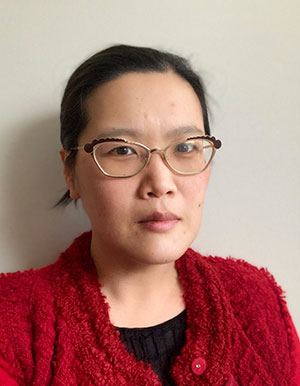 Today's profile is Pollyanna Rhee, an assistant professor at the University of Illinois, Urbana-Champaign and a member since August of 2018.
Today's profile is Pollyanna Rhee, an assistant professor at the University of Illinois, Urbana-Champaign and a member since August of 2018.
Dr. Rhee, thank you for participating in this feature and letting the rest of the membership get to know you in a small but important way. To begin, can you tell SAH a little about your background and what interests you most about architectural history?
My academic history is a lesson in the significance of luck. Unlike many of my classmates in my PhD program in architecture at Columbia, I didn’t have a professional degree in architecture nor did I study art history as an undergraduate—I studied politics and history. I started the PhD program in 2011 right after finishing the Master of Science Program in Critical, Curatorial, and Conceptual Practices in Architecture at Columbia. At the time, I had a sense of the larger questions and themes I wanted to explore, but no actual places or buildings. And this was the case, more or less, until the process of writing my dissertation prospectus. I wanted to write about environmental ideas in the shaping of the American West’s urban landscapes and cobbled together something along those lines. But an off-hand comment made by a faculty member at an environmental history seminar months after I started archival research set me on the actual path of what became the dissertation, which in part provides a new narrative of modern environmentalism’s rise in the United States.
Coincidentally it was at SAH in St. Paul in 2018, after what seemed to be a devastating series of near misses, when I was offered my first academic job as a postdoctoral fellow in environmental humanities at the University of Illinois. It was a dream position—one I wanted as soon as I read the job description in the summer of 2017. At Illinois, I worked very closely with Bob Morrissey, a historian of Early America at Illinois, and Leah Aronowsky, a historian of environmental science now at the Columbia Society of Fellows, as well as graduate and undergraduate students, and met a really fantastic group of humanities faculty. During my second month at Illinois, the university’s department of landscape architecture, had a position for a modern landscape historian open up, and somehow through that process I was offered the job. My fellowship was two years and only required me to teach one course during that period, so I deferred my start date to finish the fellowship and started on faculty in Fall 2020 where I teach courses on modern and global landscape history. Every single day, I am absolutely in thrilled disbelief that I get to do what I do with the people around me.
Does your current work still involve urban landscapes and environmentalism?
I’m currently working on two major research projects and perhaps neither of them sound like architectural history at first glance. The first, based on my dissertation, is a history of the rise of modern environmentalism in the United States and uses the city of Santa Barbara, California to tell that story. The place--but also ideas of home, domesticity, community, and belonging--are central to how people form attachments to their environments.

The second is a history of the concept of “quality of life” since 1945, especially the ways that cities and communities have been shaped around the aspiration of attaining quality of life whether it means access to leisure time, environmental quality, or health outcomes. This project began from research in the dissertation—so many figures in the archives discussed their concerns for maintaining Santa Barbara’s quality of life that I began to investigate what they meant by this evocative, yet rather vaguely-defined phrase.
Overall, what drives my work is an overarching interest in how people construct normative ideas about the world, the types of people constructed or envisioned by those norms, what counts as common sense, and how the built and natural environments contribute to the stabilization that common sense. For example, in the first project, one underlying thread within it is a critical stance towards often-romantic views of “community” as an unalloyed good. I spend quite a bit of time underscoring the reactionary and exclusionary potentials of community. In a review essay that’s just been published for early access for Modern Intellectual History I make the argument that examining architecture and landscapes are really ideal for this type of investigation because they’re often considered mere background for the ostensibly more substantive aspects of political and social life, but actually can help put into relief the political culture and priorities of communities, institutions, and governments.
Do you have a particular memory of when you first became aware of the significance of architecture or when you knew you wanted to study it?
Probably reading of Carl Schorske’s Fin-de-Siecle Vienna on the Ringstrasse as an undergraduate. It’s still a real model to me of how to write about culture and politics.
Other than Schorske, do you have a particular architect or historian that has influenced your work and career?
I’ve been exceptionally lucky when it comes to people around me both within in architectural history and in environmental history, most especially Felicity Scott, Reinhold Martin, and Karl Jacoby. When you’re doing an interdisciplinary dissertation within architectural history—which I know a lot of people do—it can be a little scary to subject your work to scholars in adjacent fields, like you’re going to be outed as a charlatan dabbler. Or at least that’s a fear of mine. But subjecting my work to historians of the American West, environmental historians, intellectual historians, and political theorists has been amazing and probably a contributing factor to what I’ve been able to do.
Now as a professor, you have an opportunity to shape others' views of the field. If a layperson asked why we should study architecture and its history, what would you tell them?
I tell my students that examining the land, landscapes, and the built environment are necessary for approaching the largest issues in our histories. In the scope of US history, this includes the legacies of territorial expansion and expulsion, slavery, war, and imperialist endeavors, as well as smaller scale, but just as revealing, histories of placemaking, domesticity, and consumption.
Has SAH enriched your work and experience with architectural history?
My first active involvement in SAH is through a book review of Shundana Yusaf’s Broadcasting Buildings published in JSAH in 2015. I think Stephen Nelson, the book review editor at the time, got my name from Felicity. Over the years I’ve written entries for the California edition of SAH Archipedia, taken part in the Graduate Student Lightning Talks, given a full paper on a panel in Glasgow, and am organizing a panel for Pittsburgh in 2022, so SAH is a regular and fulfilling presence in my work. This is especially the case now that I’m not in graduate school anymore, so SAH serves as a really important way to keep in touch with my classmates.
The last year has seen significant changes in our society and in SAH. Do you have a vision for how SAH should evolve in the future, and how do you see yourself as part of that growth?
At a time when public interest in the built environment and its historical legacies is at a height, we need ways to address the fact that there is so much work in architectural history and for architectural historians to do when it comes to teaching, whether or not the students are future designers, and scholarship, and there are simply not enough jobs for that work to be done.
You were a participant in the Method Acts workshops that were new to SAH this year. How do you think they lived up to expectations and how could they be even better?
The Method Acts workshops revealed a real desire for outlets for early-career scholars to discuss the methods, the spadework, and questions that come out of studying architectural history. Doctoral programs in architectural history are quite small, so it’s really necessary, more so now, to be able to forge connections outside our respective institutions, especially since the motivating questions and intellectual touchstones can be quite different across departments. I would love to have more discussions about underutilized archives, surprising discoveries, and theoretical touchstones and questions that drive our scholarly work.
You have mentioned the small market of academic jobs in the field, and the need to build bridges between scholars from different institutions. What advice would you give to a young person considering a career in architectural history or a related field?
Often I think of academic life as an equivalent of professional sports or Hollywood with much less lucrative compensation packages, not just because of the importance of luck and circumstance, but also because one needs good bearings and a thick skin. Graduate school was an absolutely fantastic time for me—I made brilliant, incredible friends, my work evolved in ways I didn’t expect, and it was just a lot of fun. In retrospect, the path I had from getting my PhD in 2018 to faculty position was remarkably straightforward, but it’s a pretty exceptional case now. The realities of the job market make me hesitant to encourage anyone to do a PhD in architectural history, but at the same time, there’s so much vital work left to do.
Thanks for you time and insights, and we will all look forward to seeing you online at this year's conference and in person for your panel in Pittsburgh in 2022.
*The image above shows the prospective plans for downtown Santa Barbara from the 1920s (Architecture and Design Collection at University of California, Santa Barbara).
SAH members engage with the history of the built environment through a broad array of specializations, professional fields, and areas of interest. Member Stories is a regular feature that recognizes the expertise and unique experiences of our members.
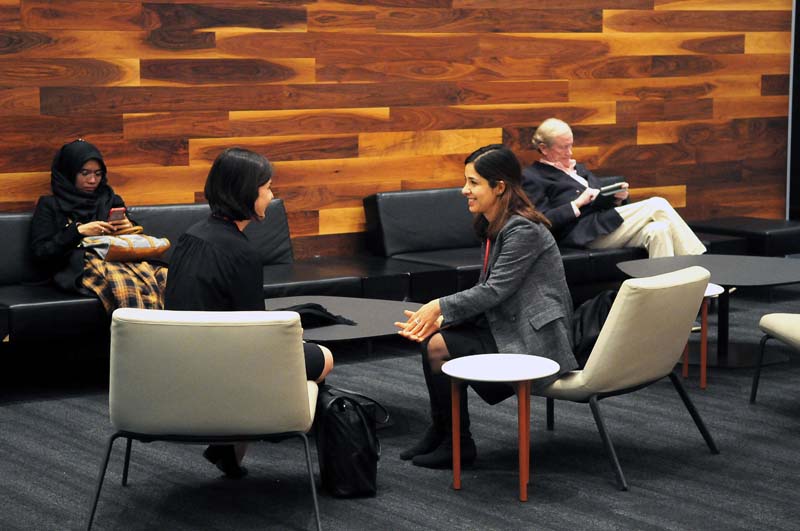
Membership Grants
Emerging scholars can apply for a one-year membership grant that helps bridge the gap between the Society's subsidized student memberships and full-cost SAH memberships.
